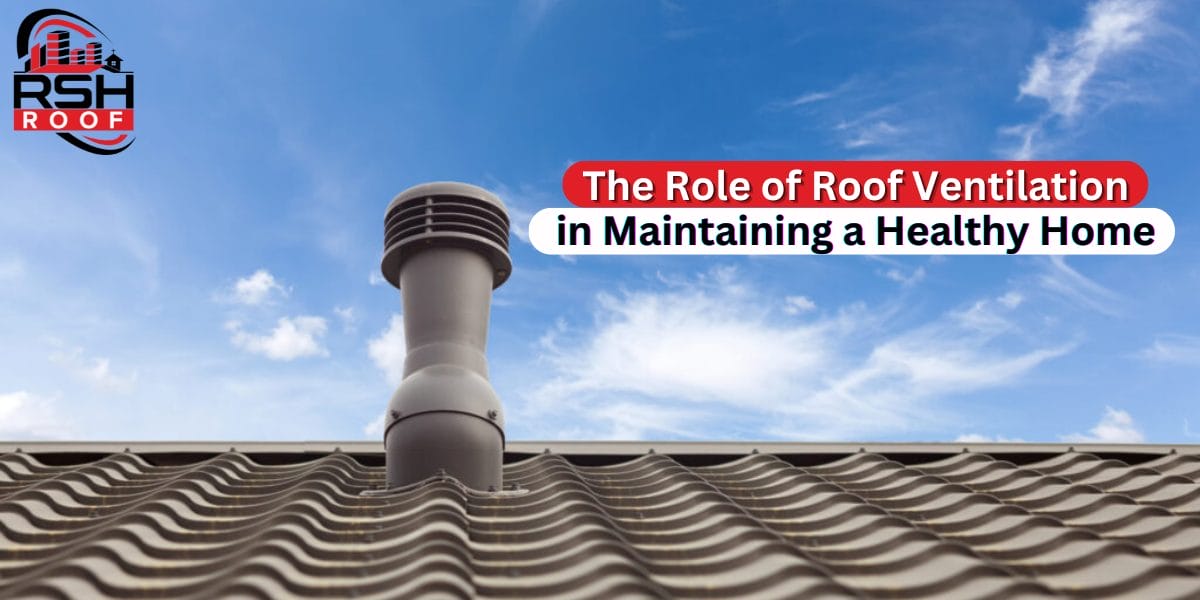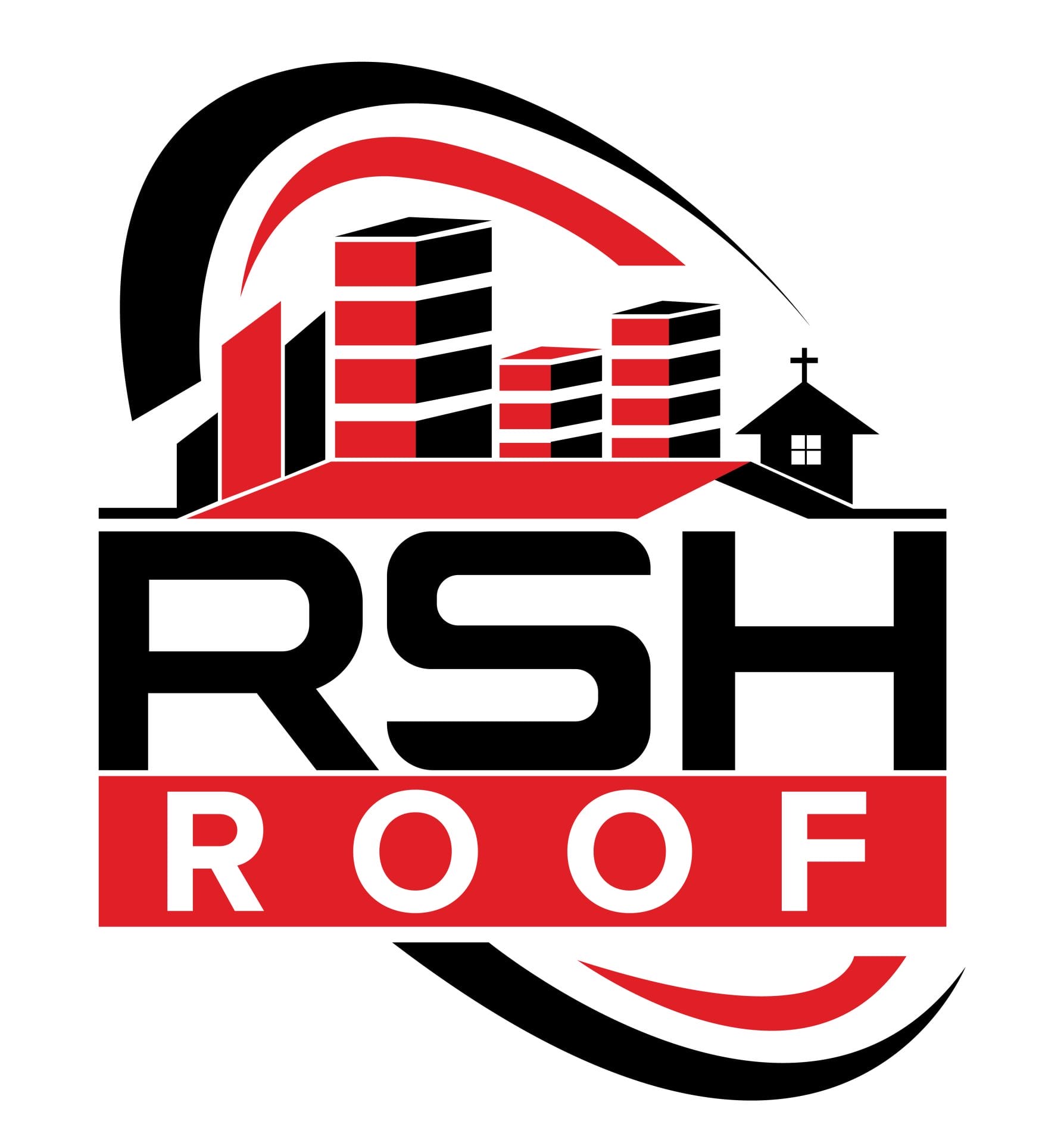RSH Commercial Roofing is a Professional Engineering & Construction Company with 25+ years of experience that specializes in Commercial & Residential Roof Inspections, Repair/Replacement services as well as commercial roofing insurance claims.

The Role of Roof Ventilation in Maintaining a Healthy Home
A well-ventilated roof is often overlooked, but it plays a pivotal role in keeping a home healthy, comfortable, and energy-efficient. A home can experience moisture buildup, high energy costs, and even structural damage without proper roof ventilation systems.
Are you trying to contact a contractor? Before that, understanding the role of roof ventilation is necessary for long-term home maintenance. Let’s make sure your home remains in top shape by understanding the required tips of RSH Roof Commercial Experts!
What Is Roof Ventilation?
The role of roof ventilation refers to the system that allows air to flow in and out of the roof space’s attic. It helps regulate temperature and moisture levels, preventing problems such as mold growth, wood rot, and excessive heat buildup.
A well-planned ventilation system includes:
- Intake vents (such as soffit vents) that allow fresh air to enter.
- Exhaust vents (such as ridge vents, gable vents, or turbine vents) that let hot, stale air escape.
This is important because a balanced ventilation system improves indoor air quality and extends the lifespan of your roof.
The Importance of Roof Ventilation
1. Prevents Moisture Damage
Without proper roof ventilation installation, moisture from daily activities like cooking, bathing, and laundry can get trapped in the attic. This leads to mold growth, rotting wood, and weakened structural components. A well-ventilated roof allows moisture to escape, keeping your home dry and safe.
2. Increases Energy Efficiency
A poorly ventilated attic traps heat during summer, forcing your air conditioning system to work harder and leading to higher energy bills. During winter, trapped heat can cause uneven temperatures, making your heating system inefficient. Proper ventilation reduces energy consumption and lowers utility costs.
3. Extends Roof Lifespan
Excessive heat buildup in an attic can cause shingles to deteriorate faster, resulting in costly roof repairs or premature replacement. Properly installing the role of roof ventilation options can extend the life of your roofing materials.
4. Reduces Ice Dams in Winter
In colder climates, poor ventilation leads to ice dams—thick ice ridges forming at the roof’s edge. These dams prevent melted snow from draining, leading to leaks and structural damage. A well-ventilated roof maintains a uniform temperature, preventing ice dam formation.
Roof Ventilation Options: Choosing the Right System
The role of roof ventilation in several systems are designed for specific home structures and climates. The most common types:
1. Ridge Vents
- Installed along the peak of the roof
- Provide continuous airflow along the entire attic
- Highly effective when paired with soffit vents
2. Soffit Vents
- Located under the eaves of the roof
- Allow fresh air to enter the attic
- Essential for maintaining a balanced ventilation system
3. Gable Vents
- Installed on the exterior wall near the roof peak
- Ideal for homes without ridge vents
- Work best with cross-ventilation systems
4. Turbine Vents
- Use wind power to pull hot air out of the attic
- More effective in windy areas
- Require no electricity to function
5. Powered Attic Fans
- Electricity powered or solar-powered
- Actively remove hot air from the attic
- Best for homes with severe heat buildup
Choosing the right roof ventilation system depends on your home’s structure, climate, and roofing material. Consulting a professional can help determine the best fit for your home.
Roof Ventilation Installation: Steps and Considerations
Installing a proper roof ventilation system requires careful planning. How does the process work?
Step 1: Assess Ventilation Needs
- Inspect the attic for moisture, heat buildup, and poor airflow.
- Calculate the required ventilation area based on attic size.
Step 2: Select the Right Ventilation System
- Choose passive ventilation (ridge vents, soffit vents) or active ventilation (powered attic fans).
Step 3: Install Intake Vents
- Soffit vents or gable vents allow fresh air to enter.
- Make sure proper placement maintains a balanced airflow.
Step 4: Install Exhaust Vents
- Ridge, turbine, or attic fans remove hot, stale air.
- Proper positioning is necessary to prevent airflow blockage.
Step 5: Test the System
- A proper airflow and temperature regulation.
- Regularly inspect vents for blockages or damage.
Proper roof ventilation installation should be done by professional roof contractors to ensure efficiency and compliance with building codes.
Roof Maintenance: Keeping Your Ventilation System Effective
Even the best roof ventilation systems require maintenance. How do we keep them working efficiently?
1. Inspect Vents Regularly
- Check for blockages caused by dust, debris, or bird nests.
- Clear any obstructions to maintain airflow.
2. Check for Leaks and Mold
- Moisture buildup indicates poor ventilation.
- Address leaks immediately to prevent structural damage.
3. Keep Attic Insulation in Check
- Proper insulation prevents heat loss and maintains a consistent indoor temperature.
- Avoid covering ventilation openings with insulation.
4. Schedule Professional Inspections
- Annual inspections by roof repair services allow vents to function correctly.
- Contractors can detect issues before they become significant problems.
Regular roof maintenance not only improves ventilation but also prevents costly repairs.
Hiring the Right Roofing Contractor
Choosing a qualified roofing contractor allows your roof ventilation installation to be done correctly. What to look for?
1. Experience and Certifications
- Look for contractors with experience in roof ventilation options and installations.
- They should be licensed and insured.
2. Customer Reviews and Reputation
- Check online reviews and ask for references.
- A reputable contractor will have positive feedback and satisfied customers.
3. Knowledge of Local Building Codes
- The contractor follows local regulations.
- Compliance with building codes prevents future legal or structural issues.
4. Transparent Pricing and Warranties
- Get a detailed estimate before starting the project.
- A good contractor will offer warranties on materials and labor.
The right roofing contractor can make all the difference in the effectiveness and longevity of your ventilation system.
Conclusion: The Key to a Healthy Home
A well-ventilated roof is necessary to maintain a healthy home, reduce energy costs, and prolong the roof’s lifespan. Homeowners can protect their investments and provide a comfortable living environment by understanding the role of roof ventilation systems, installation methods, and maintenance tips.
Are you considering improving your roofing process? Consult a roof contractor or roof repair services i.e., RSH Commercial Roofing Experts who can help you find the best roof ventilation options for your home.
Investing in proper roof ventilation installation today will prevent costly repairs and energy waste in the future. Keep your home safe, efficient, and well-ventilated for years to come!

